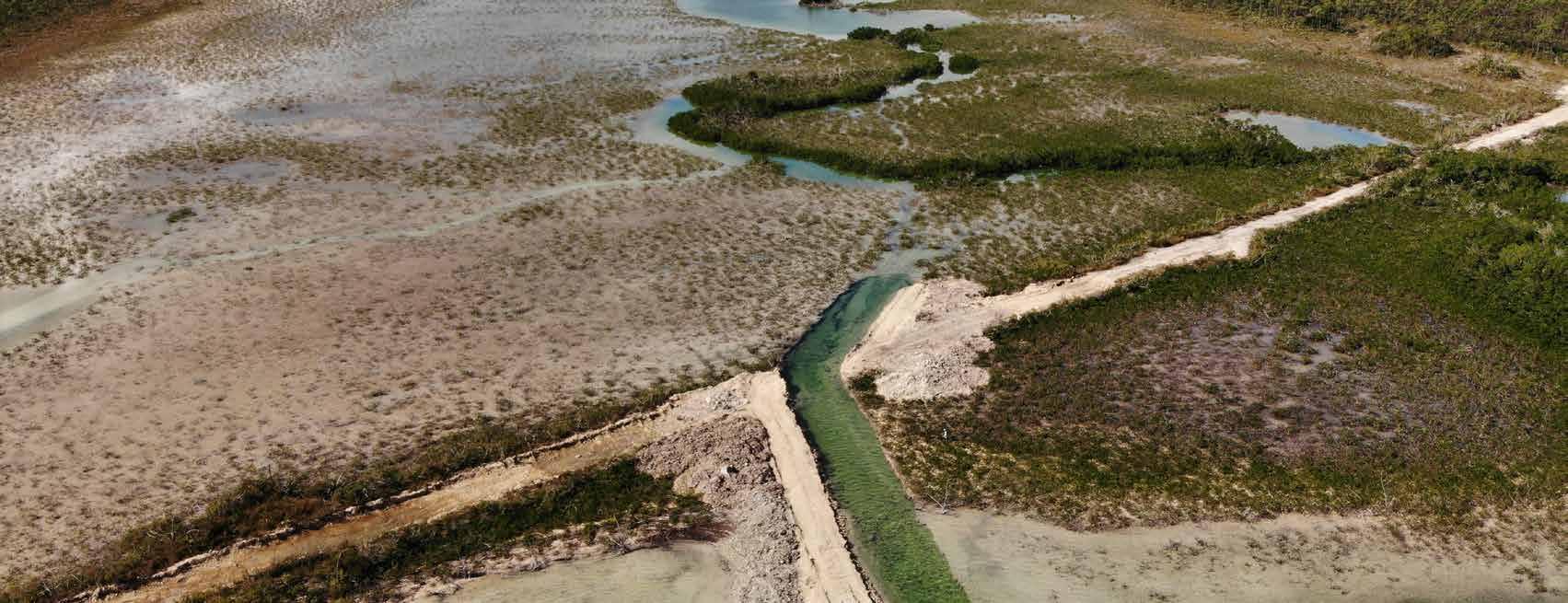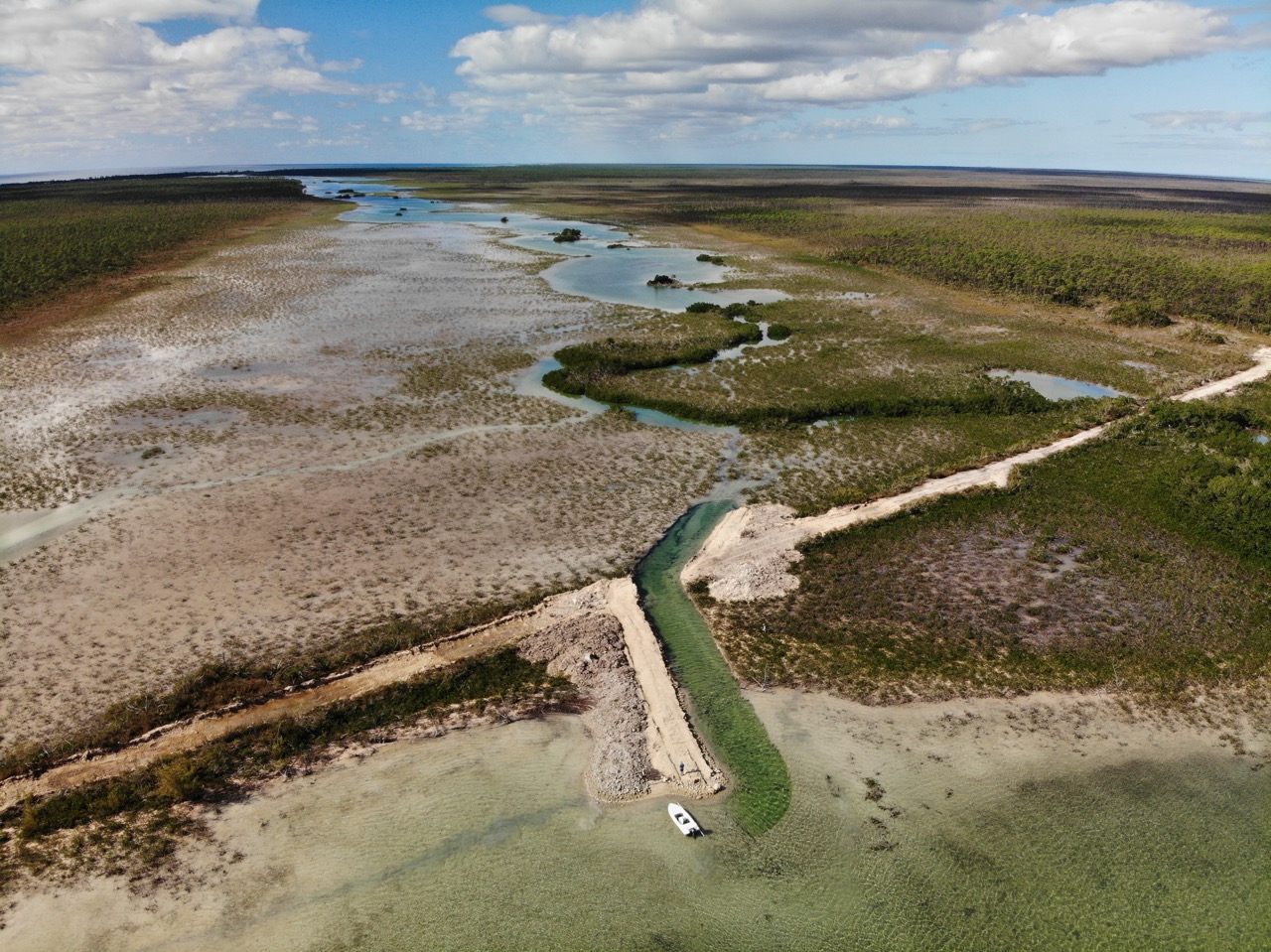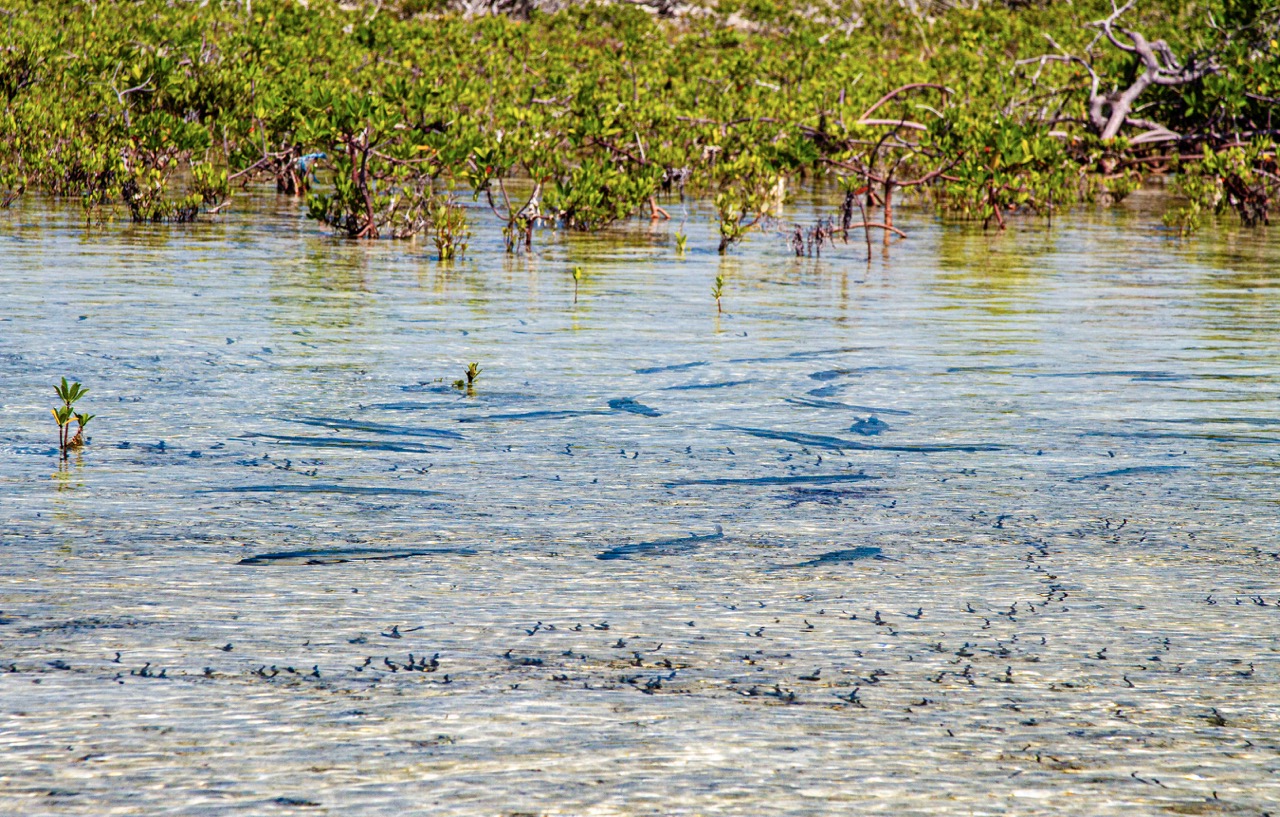
5 minute read
Back in the Flow
Bonefish & Tarpon Trust is helping to restore tidal creeks in The Bahamas to support the health of the flats fishery and the environment.
BY SUE COCKING
Not long before Hurricane Dorian ripped through Grand Bahama and Abaco Islands in 2019, Bonefish & Tarpon Trust spearheaded an important habitat restoration project at August Creek on Grand Bahama’s East End. Workers made three cuts through a logging road built in the 1950s that had blocked natural tidal flows between the creek’s north branch and the ocean and limited the historic pathways where bonefish migrate, feed, and prepare to spawn. The cuts re-opened free-flowing natural waterways and enabled bonefish (and other species) to use a range of habitats—mangroves, seagrass and sand flats—where they hadn’t been seen in decades. Local residents, fishing guides, fishers, government officials, and leaders of the Bahamas National Trust (BNT), which oversees parks in the islands, lauded the restoration and urged that it be extended to other areas on East End.
Now it’s happening.

“We’re now in the second phase of creek restoration—Snapper Island and the Gap,” said Rashema Ingraham, BTT’s Caribbean Program Director. “These creeks would have free flow to the ocean. Snapper Island is downstream of August Creek to the north. The Gap [West Gap Creek] is west of August Creek. The road went west-to-east straight across those creeks. The road will be removed from that area.”
BTT and the Bahamas Ministry of Works signed an agreement in 2024 to collaborate on the restoration of Snapper Island and the Gap. BTT will be providing technical expertise and funding to support both projects. At the same time, scoping is underway elsewhere across the Bahamas to identify future creek restoration.

The phase two creek restoration is slated for completion in the spring of 2025, according to Charlene Collie, Project Coordinator for the Ministry of Works.
At Snapper Island, plans call for workers to use heavy excavation equipment to carve a 984-foot-long, 98-foot-wide, 2-foot-deep gap in the defunct logging road. At the Gap, a 656-foot-long, 118-foot-wide, 1-3-foot-deep opening is being excavated.
“We anticipate immediate improvements in the area once these causeways are opened that will restore flow of water in and out of mangrove areas and improve the fish habitat,” Collie stated.
Another benefit of both projects, she cited, is flood mitigation.
Next steps may include a larger restoration project to bring back natural tidal flows at the McLean’s Town Causeway, known as “the bridge.” Also, Collie notes that, while the pre-Dorian excavation at August Creek improved flow in the area, the north channel remains partially blocked by storm debris. Further excavation of the causeway is recommended to improve tidal flow in the creek.
Conserving and restoring bonefish habitat is vital to The Bahamas’ economy. A BTT study in 2018 found that flats fisheries—bonefish, tarpon, and permit—generate more than $169 million annually for the nation’s coffers.
“More habitat means more fish,” said Dr. Aaron Adams, BTT’s Director of Science and Conservation. “We’re restoring the connection to an extensive amount of habitat.”
As Grand Bahama’s East End returns to normalcy post-Dorian, habitat restoration will enhance that recovery, according to Ellsworth Weir, Director of Parks for BNT. The Gap lies within the Lucayan National Park.
“It’s a big deal,” Weir said. “With the effects of Hurricane Dorian and COVID, nothing could really happen until now. Residents are on board. think they will be happy to know there will be more biodiversity in the south end of the creek. Most of them have rebuilt. School is open. The clinic and the police station are back. The guys who use the water, they appreciate it.”
Robert Neher owns and operates East End Lodge, a fly-fishing operation in McLean’s Town near August Creek that employs 19 local residents as guides and lodge staff and accommodates 14 guests. The veteran guides regularly target bonefish in the island’s mangrove-fringed tidal creeks and on the vast adjoining flats. Neher and the guides understand full well the connection between the health of the East End’s creek systems and the health of the flats fishery as a whole.
“It’s important to have the environment at its best,” said Neher. “These two restoration projects will improve tidal flow to the creeks, which are estuaries for small fish that need that natural flow for their survival. These creeks are a safe haven for young bonefish.”
Neher also agrees that the McLean’s Town Causeway is an area that should be prioritized for restoration. “That’s an extremely important project because the water flow was blocked when the road was built,” he said. “Because of this, the water is strangled trying to get from one side of the creek system to the other. We need to get it opened back up, so the water flow can be brought back to its original state for the health of the fishery. The existing culvert in the causeway needs to be widened and enhanced.”
Ultimately, the success of the restoration projects on Grand Bahama’s East End will benefit the marine environment, expand access, and lead to even better fishing.

Sue Cocking is a freelance outdoors writer in Sebastian, Florida. For 20 years she worked as an outdoors writer for the Miami Herald. She loves fly-fishing, scuba diving and traveling.








